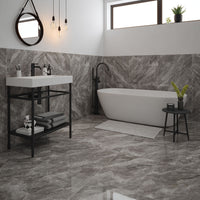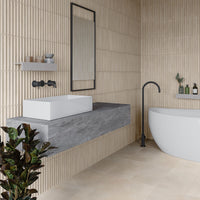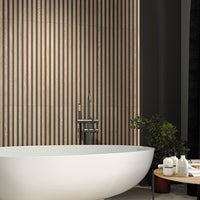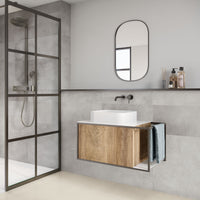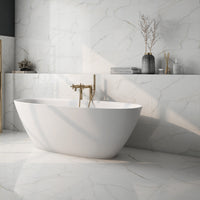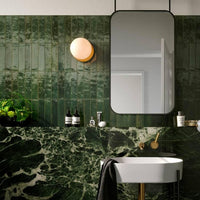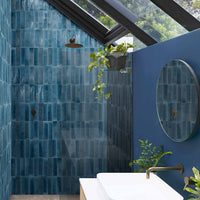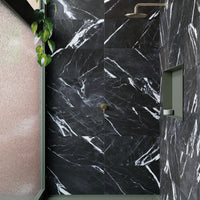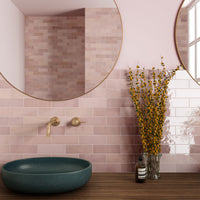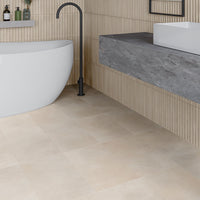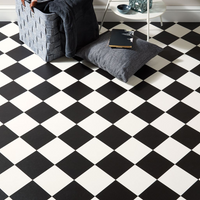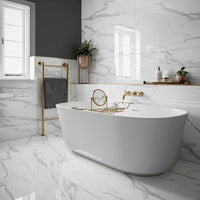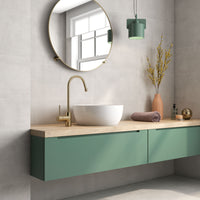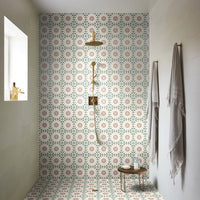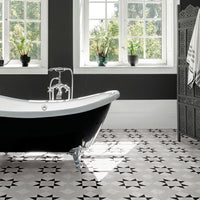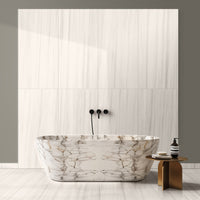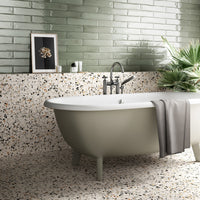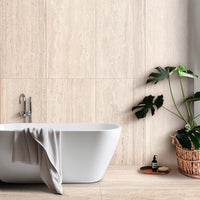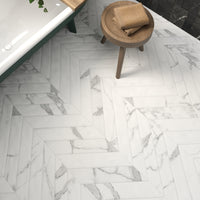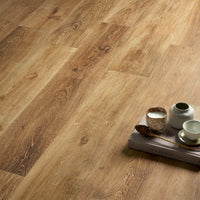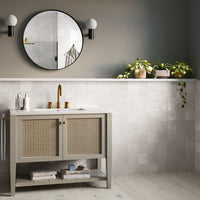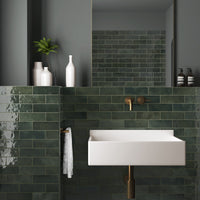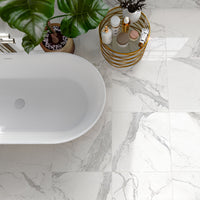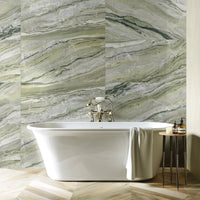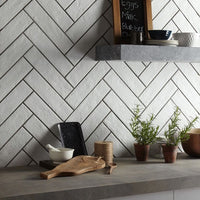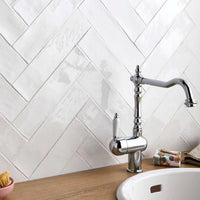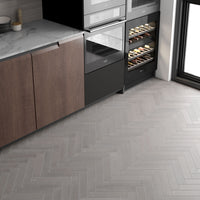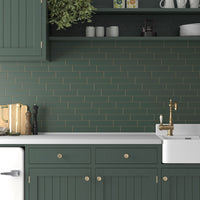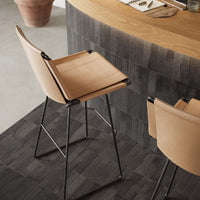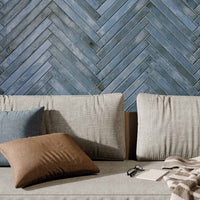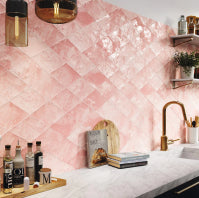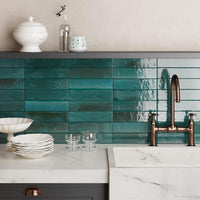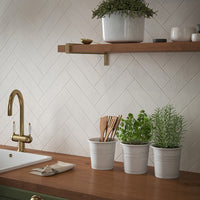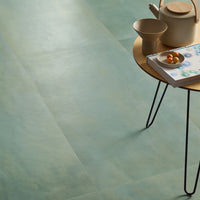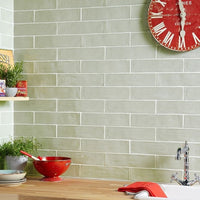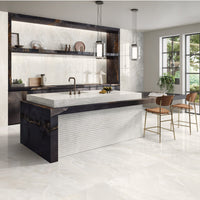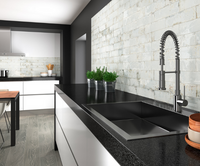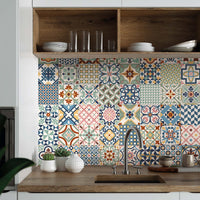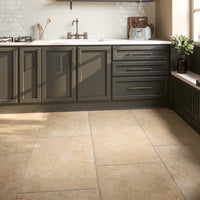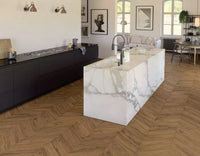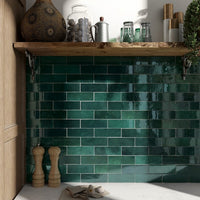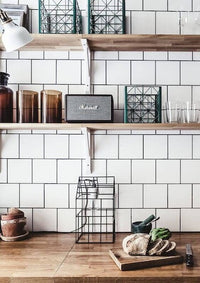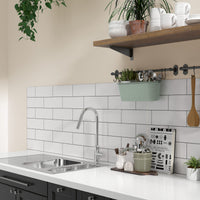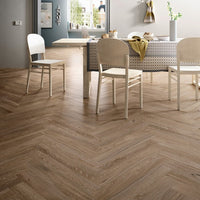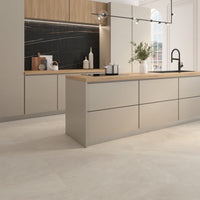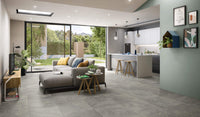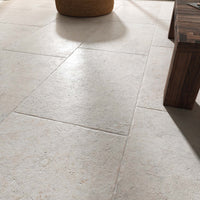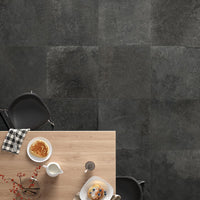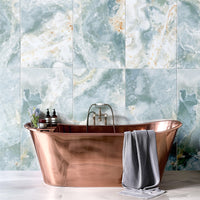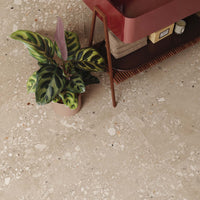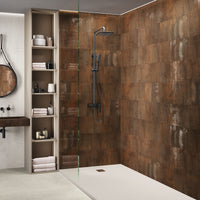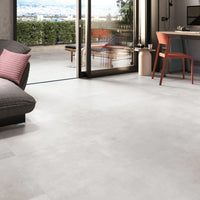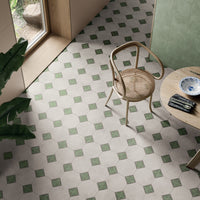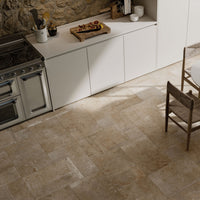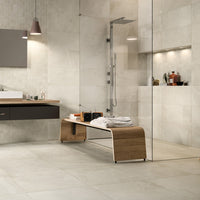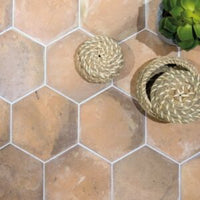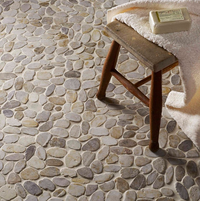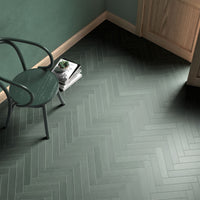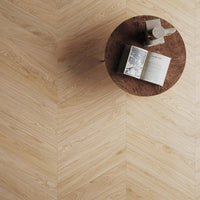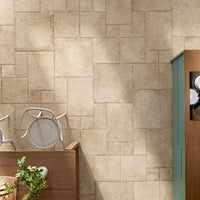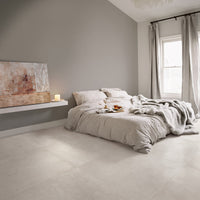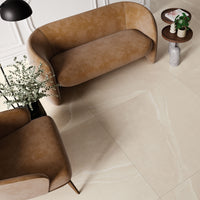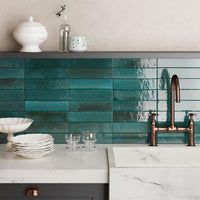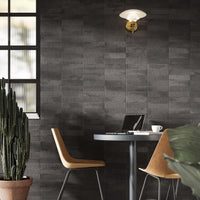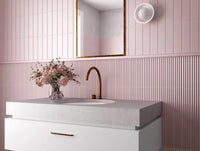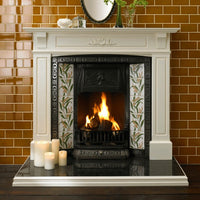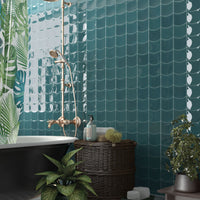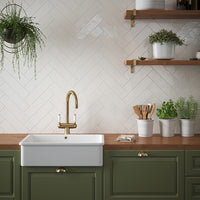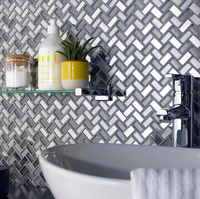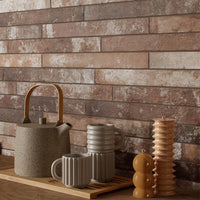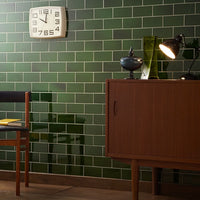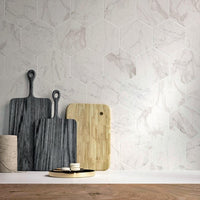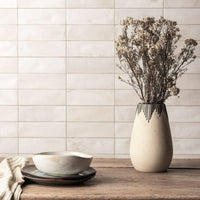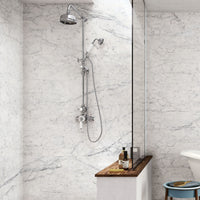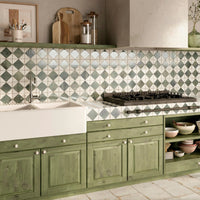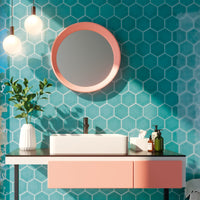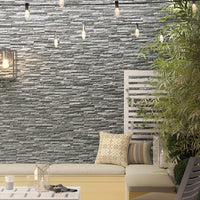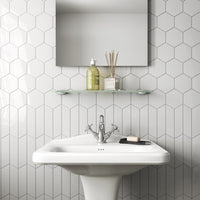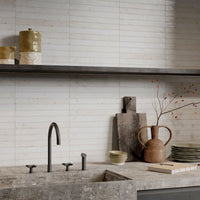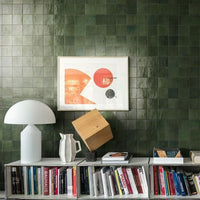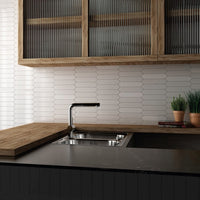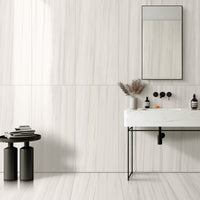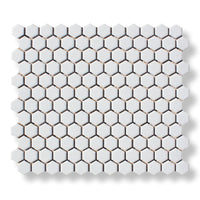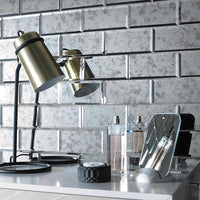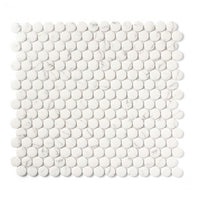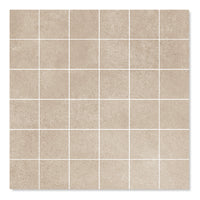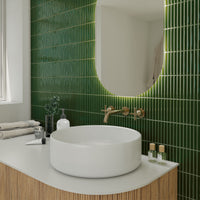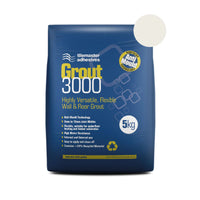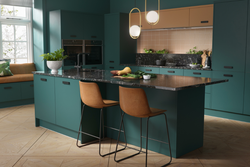What is the herringbone layout?
According to our pocket dictionary, a herringbone pattern consists of ‘rows of parallel lines that slant in the opposite direction, to form V shapes’. In everyday English, that means arranging rectangular tiles at right angles to each other. Repeated over, this forms the zigzag design that makes so many of us weak at the knees. A little pub trivia for you - the word ‘herringbone’ actually refers to the way the layout resembles the bones of the humble herring fish. Exactly. Fish and chips, anyone?
Fish and chips, anyone?
What makes herringbone tiles so special?
Wow, where to begin! To us, herringbone tiles are a great way to add detail without breaking the bank and we could spend all day gazing at pictures of zigzaggy floors. There’s something undeniably swoon-worthy about the classic silhouette and it’s the epitome of timeless sophistication - stylish enough to catch your attention, subtle enough to look good anywhere. It’s a look that’s been in vogue for over two thousand years. The Ancient Romans were fond of the ‘spiked work’ pattern as they called it - there's examples to be found all over their former empire, from intricate brickwork to arrowed footpaths. More recently, you’ll find countless gorgeous Parisian apartments with floors draped wall-to-wall in right-angled parquet planks. All roads lead to Rome, er Paris
All roads lead to Rome, er Paris
What sizes do herringbone tiles come in?
A fair few! Any rectangular tile can be laid in the fish bone pattern - everything from dinky mosaics to extra large planks, in theory. However in reality, we find that brick effect tiles and large wood effect tiles work best. Go too small and you can end up with too many distracting grout joints; too large and you can easily lose the geometric effect. Little and Large For most floors, our Herringbone Brown and Woodwork Beige tiles should be perfect. Although they’re obviously different in size, they’ll give you dreamy diagonal style and visual impact without being too overbearing.
Little and Large For most floors, our Herringbone Brown and Woodwork Beige tiles should be perfect. Although they’re obviously different in size, they’ll give you dreamy diagonal style and visual impact without being too overbearing.  Pick a tile that's not too small, nor too big!
Pick a tile that's not too small, nor too big!
Where can I use herringbone tiles?
We actually think that herringbone and tiles are the greatest pairing since, er, Bonnie and Clyde. There’s a whole hosts of sizes and designs available meaning you can style your home in herringbone to your heart’s content. Laying wood effect tiles in a herringbone pattern is a sure-fire way to give your floors an instant facelift. And the great thing is, thanks to the durability of porcelain you can now have zigzag floors in rooms that were previously off-limits. So that's a hello to herringbones in bathrooms and busy hallways - water and foot traffic won’t wear or rot our hardy tiles, thank you very much! Herringbone marble style tiles plus bathroom equals boutique glam Step up the style with your splashbacks and get fashionable feature walls by using smaller format tiles. The intricate pattern is a statement in itself so you don’t need to go OTT when it comes to colour. In fact, monochrome tiles lend themselves particularly well to herringbone patterns, especially if you graduate the tones.
Herringbone marble style tiles plus bathroom equals boutique glam Step up the style with your splashbacks and get fashionable feature walls by using smaller format tiles. The intricate pattern is a statement in itself so you don’t need to go OTT when it comes to colour. In fact, monochrome tiles lend themselves particularly well to herringbone patterns, especially if you graduate the tones.  Hip walls love herringbone tiles If you’re thinking of using metro tiles, why not lay them herringbone for a modern twist on a design classic?
Hip walls love herringbone tiles If you’re thinking of using metro tiles, why not lay them herringbone for a modern twist on a design classic?
What’s the difference between herringbone and chevron tiles?
It’s pretty easy to confuse herringbones and chevrons and to be honest, the names are pretty interchangeable. Both refers to zigzag laying patterns but there’s a key difference - with herringbone the pattern is staggered, whereas chevrons have an angled edge so that when laid, there’s a continuous zigzag. Still a little mystified? To clear things up, check out the two images below. To the left you have rectangular planks in the standard herringbone pattern. On the right you’ll see the chevrons with their chamfered edges. Spot the difference. And just to confuse you, chevrons are sometimes called 'French Herringbones'
Spot the difference. And just to confuse you, chevrons are sometimes called 'French Herringbones'
What are the different styles of herringbone tiles?
Naturally, there's lots of herringbone tiles that are designed to look like wood. After all, herringbone patterns were once limited to expensive parquet floors. However, over the past twelve months there's been a flurry of interesting herringbone designs coming out of the kilns, which gets our creative juices flowing! These tend to be on the smaller side - exhibit A being our Terra Beige brick tiles. These are a modern twist on traditional terracotta and are perfect for today's vintage look.  Prefer things a bit more plain and simple? Stick to tiles in muted tones, such as our Brix White porcelain tiles. With their textured surface, they're anything but square - especially if you lay them herringbone with a contrasting grout to emphasise the distinctive layout.
Prefer things a bit more plain and simple? Stick to tiles in muted tones, such as our Brix White porcelain tiles. With their textured surface, they're anything but square - especially if you lay them herringbone with a contrasting grout to emphasise the distinctive layout.
 Add oomph with plain tiles by laying at right angles
Add oomph with plain tiles by laying at right angles
